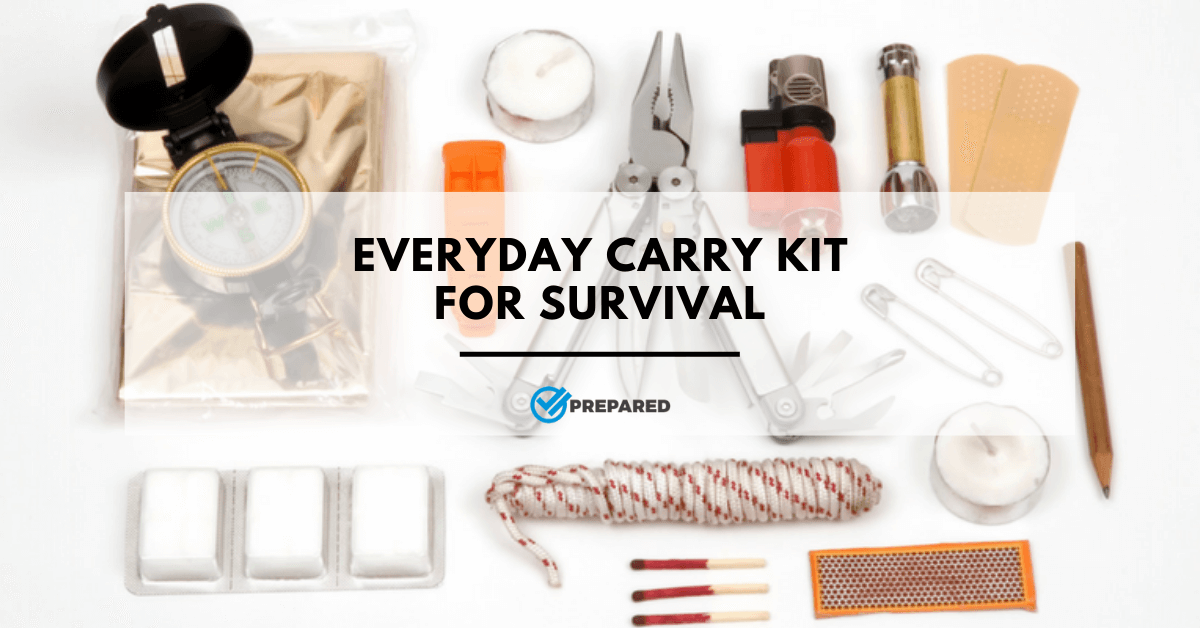Many of us have imagined what it would be like to find out that SHTF when we were not prepared. Most of us that have a bug-out bag have it stored safely at home. So what happens when SHTF and you are at work or driving in your car?
The best way to be prepared for this scenario is an Everyday Carry Kit. This is a collection of survival items that you can keep with you at all times. The amount of gear you can carry will increase if you have a briefcase, backpack, or gym bag. However, we will assume that you have none of these for this article.
Strategy to Maximise Your Everyday Carry Kit
There are three basic strategies that will allow you to get the most bang for your buck out of your Everyday Carry Kit.
1) Select items that are small – When you are keeping your gear in your pockets, smaller is better. This means that a small pack of iodine tablets for water purification is better than a straw style filter. A mini lighter is better than a friction fire kit. A space blanket is better than a hiking tent. A spool of snare wire is better than a fishing rod.
2) Items should have multiple uses – You want to try to select items that can be used for multiple survival purposes. For example, lacing my boots with paracord gives me cordage for trapping, fishing, shelter building, and even fire-making.
3) Pick items that blend in – If you can bring items that blend in, that is even better. For example, I have a water bottle with a filter built into the lid. Most people just think it is a water bottle. I also have a tactical pen that has a LED-light, a blade, a glass breaker, and a hex tool all built in. It is also perfect for self-defence. Most people just think it is a nice pen.
Four Pillars of Survival
When selecting items for your everyday carry kit, you should focus on items that contribute to the four pillars of survival. This includes food, water, fire, and shelter. You should also focus on items that will help you get home. We assume that you will likely use this kit when you are away from home, so you want to have the items needed to reach your family.
For food, I like having a knife and some cordage for trapping. For water, I like iodine tablets and my filter bottle. For shelter, I like an emergency blanket and some cordage. For fire, I like a small lighter, a ferro rod, and maybe some tinder.
Include Wallet Items
Another excellent strategy for keeping tools on you at all times are wallet survival tools. I have one that is credit card sized and folds into a sharp knife. I have another that is a knife, a hex tool, and a ruler. The final tool I keep has a knife, a bottle opener, a can opener, a fire lens, a compass, tweezers, a toothpick, cordage, a signal whistle, and a ferro rod. These tools are often overlooked and are on me all the time.
A Basic Everyday Carry Kit
Keeping any tools on you at all times is better than being completely unprepared, but an organised plan is even better. If you take the time to really look at maximising the items in your EDC kit, you will be that much more prepared. It is a simple adjustment in lifestyle that could very much save your life. Take a moment to consider these items, and make sure your survival plan is air tight.

Chris was born and raised in South Africa and has worked in the field of risk management, organisational resilience, and business continuity for more than a decade. During his career he has seen how private and public sector organisations benefit from effective risk management and business continuity planning. Realising that families and communities can also benefit from the same tools, methodologies, and principles, he started Prepare with Foresight.
Prepare with Foresight was launched to assist individuals and families to have the peace of mind that they will be able to recover from and successfully adapt to the consequences of adverse events.

